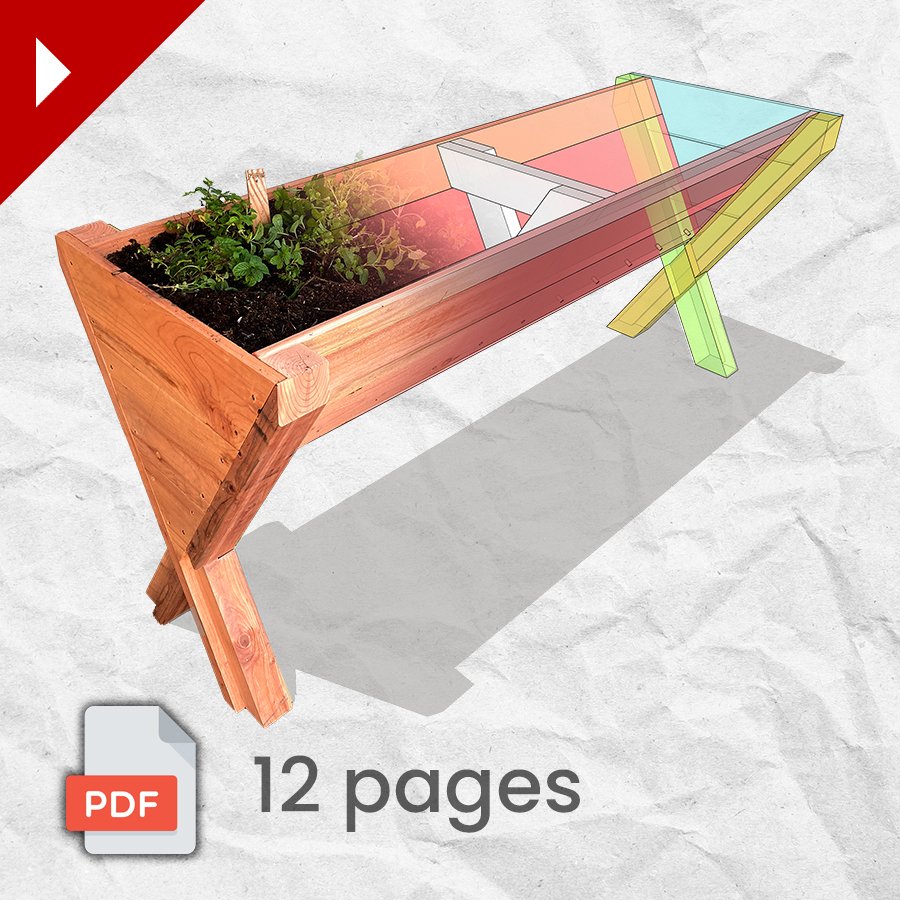Picking the Right Drill Bit Size for a Screw
Why you need to drill before using screws
When using screws in wood, it’s important to pre-drill a pilot hole in your piece, because without one the screw can act like a wedge and split the wood apart. The closer your screw is to the edge of the piece, the more likely it is to split.
Different types of screws
Some screws intended for wood have a flat surface on the underside of the screw head, such as:
pocket hole screws
cabinet screws
washer-head screws
Cabinet screw with a flat underside
Screws like this only require a pilot hole to be drilled, and then the bottom of the screw head will clamp down on the piece of wood. This will avoid the risk of splitting.
Most woodworking screws have a tapered shape on the underside of the head, like this:
Wood screw with a tapered underside
Countersinking the pilot hole
Because these wood screws have a tapered shape, the head of the screw can act like a wedge, so you will also need to countersink the pilot hole after drilling it. Countersinking is a process where you flare out the opening of the hole at the same angle as the taper on the screw.
This can be done with a countersinking bit in your drill, which looks like one of these:
Countersink bits
Another option for countersinking is to use a drill bit that has a countersink built in.
Drill bit with built-in countersink
This type of bit saves a lot of time, because you can do the drilling and countersinking in one motion, without the need to switch out your bit. These types of drill bits are normally sold in a set of 3 or 4, which match common screw sizes. This is my favorite way to pre-drill screw holes.
What diameter drill bit to use for the screw
There are a couple different methods for choosing the right drill bit size: eyeballing and numerical.
Eyeballing the drill bit
The first method involves eyeballing, or looking at the drill bit in front of the screw. The technique involves holding the drill bit in front of the screw so the shafts are parallel and the drill bit is obstructing the screw. You want the shaft of the drill bit to be the same diameter as the shaft of the screw, not including the threads on the screw. This will ensure that the drill clears a path for the shaft of the screw, but there will still be plenty of wood for the threads to grab onto.
Bob’s Wood Stuff video about eyeballing a drill bit for a screw
One of the main benefits of this method is that it can be done without knowing the size of the screw or the size of the drill bit. Often times, smaller diameter drill bits don’t have the size stamped onto them, or it has worn off from use. Also, if you get screws for free, you don’t always know their exact size.
Choosing your drill bit numerically
The other method of choosing your drill bit involves picking the bit based on the number of the screw size. Use the table below to choose your drill bit. If you know the size of your
| Screw Size | Drill bit size in softwood | Drill bit in hardwood |
|---|---|---|
| #4 | 1/16" | 5/64" |
| #5 | 5/64" | 3/32" |
| #6 | 3/32" | 7/64" |
| #7 | 3/32" | 7/64" |
| #8 | 7/64" | 1/8" |
| #9 | 1/8" | 9/64" |
| #10 | 1/8" | 9/64" |
Hardwood versus softwood
You’ll notice on the table above that the drill bit size is different depending on whether you are drilling into hardwood or softwood. Because softwood is less dense, you should should drill a slightly smaller hole (one size down), because the fibers can be crushed more easily. Having a slightly smaller hole will give a more secure hold in a softwood. This applies whether you are using the eyeballing method or going by numbers.
Extremely dense wood species require a slightly larger hole. These species include but are not limited to: hard maple, ash, wenge, ironwood, ipe, white oak, etc. The fibers of a dense wood species are more resistant to crushing by the threads of the screw, so it is good to go up by one size on your drill bits, as long as the bore of the hole is still smaller than the threads of the screw.
Another thing that can help a lot when working with very dense wood species is to apply wax to the screw threads. You can use paraffin wax that is used for canning, or you can rub a candle onto the screw, which is also paraffin wax. This reduces friction on the screw as it goes into the wood.
Exceptions to the rules
It’s okay to put a screw into plywood without pre-drilling a pilot hole. Plywood is glued together in layers of alternating grain direction, so it won’t split like normal wood will. You can also get away with not countersinking the screw hole when using plywood. However, it’s not a bad idea to pre-drill in plywood, and you can apply the same practices as with solid wood.
A great way to apply this knowledge about how to use wood screws is to build your own planter box! You can find detailed step-by-step plans here at Bob’s Wood Stuff.








